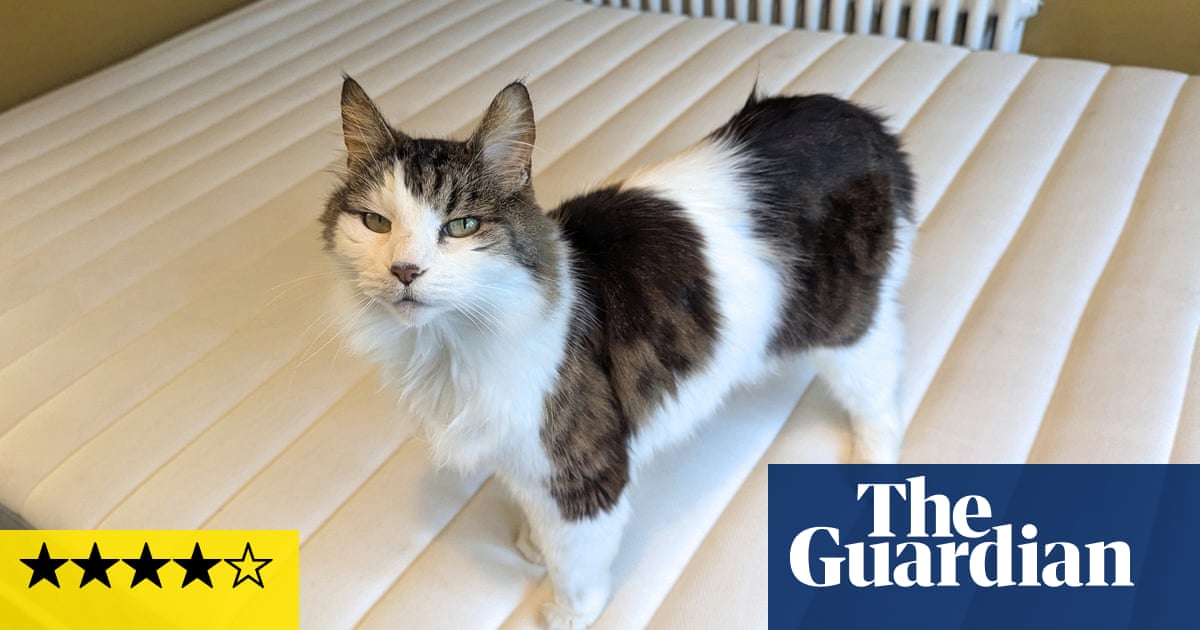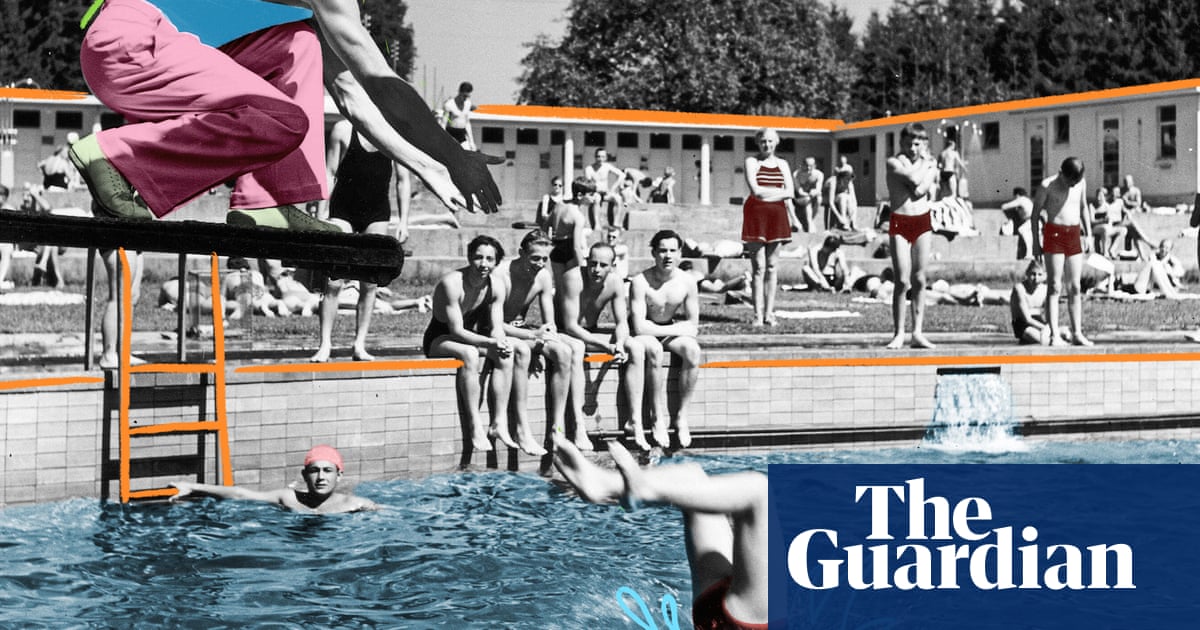My expectations for the Ikea Valevåg were, to be polite, limited. Ikea’s mattress is less than a fifth of the price of a Simba Hybrid Pro – but somehow comes with the same 10-year guarantee. Seriously? Expecting a decade’s worth of blissful sleeps from a Valevåg sounds like an attempt to wear the same £8 Primark jumper every day until 2035.
But when I tested the Valevåg alongside several more expensive rivals, I realised it’s not the mattress equivalent of fast-fashion tat. Its price belies a well-constructed product with pocket springs that provide consistent support and snoozable comfort. It can’t compare with the pricey Simba or the best-in-show Otty Original Hybrid for ergonomic cosiness, but it’s a brilliant buy for a guest room or a young person’s bedroom.
To make sure, I enlisted the help of my 22-year-old niece, Alex, in testing the Valevåg. Her reluctance to give it to charity after two months of sleeping on it – sorry Alex, them’s the rules at the Filter – reassured me that it’s a genuine bargain and not a false economy destined for landfill.
How I tested
I took delivery of a medium-firm Ikea Valevåg in a double size in December. I shared it with my husband for three nights before delegating responsibilities to Alex, who slept on it for two months. Together with other family members, we rated its firmness and overall comfort side by side against five other mattresses, and I ran lab-style tests to measure factors such as sinkage, edge support and heat retention. You can read more about our mattress testing exploits here.
What you need to know, from price to firmness
The Valevåg is one of seven sprung mattresses made by Ikea. It falls roughly in the middle on price, costing from £149 for a single to £359 for a super king, all available in firm or medium-firm tension. The double size I tested costs £219.
The Ikea is the only pocket sprung mattress I’ve tested so far. All the others are hybrid mattresses that contain multiple layers of memory foam and springs. It does have an upper layer of polyurethane foam, which I measured to be 5cm deep, but with a density of 33kg/cu.m, it’s not elastic enough to be classed as memory foam. Instead, it’s “reflex foam” and adds much-needed resistance and support above the springs. It also helps to create a flat sleeping surface beneath the polyester fabric cover, which isn’t removable.
Under the foam layer, the Valevåg has 249 steel springs per square metre, adding up to about 640 in a double size. Each spring is wrapped in a fabric pocket to help it move independently and isolate motion – in other words, so the whole thing doesn’t bounce too much when you move around in bed. There’s also a layer of felt below the springs to help maintain the mattress’s structure.
At 24cm deep, the Valevåg is the thinnest mattress I’ve tested, and this has a couple of advantages. First, it’s much lighter than the chunky hybrids. Moving it up and down stairs on my own still took effort, but it’s much easier to manoeuvre than its more luxurious counterparts. It’s also perfect for a standard fitted sheet – a relief after I failed to squeeze my sheets on to the likes of the 31cm-thick Origin Hybrid Pro.
Ikea’s mattress would be relatively easy to flip over, but you don’t have to. The Valevåg has a distinct top (sleeping) side and bottom side, more like a hybrid than a conventional sprung mattress. Instead of flipping, rotate it 180 degrees every few months to prevent indentations where you sleep.
Ikea’s description of the Valevåg as “medium-firm” is spot on. My family scored it an average 6.8/10 for firmness, similar to the Simba Hybrid Pro. In my lab tests, the Valevåg sank a maximum of 34mm under 7.5kg of weight – closer to the softest mattress I’ve tested (the Eve Wunderflip Hybrid, which sank 40mm) than the firmest (the Origin Hybrid Pro, a mere 18mm). Both these mattresses are advertised as medium-firm, too.
You can test the Valevåg’s firmness at Ikea, but bear in mind that many other shoppers may have had a go before you, with a softening effect over time. If you’d rather test your own new version, Ikea gives you a 365-night free trial. Keep it in good condition with a mattress protector if you hope to avail yourself of the refund offer.
Specifications
Type: pocket sprung
Firmness: advertised as medium firm, panel rated as 6.8/10
Depth: 24cm
Cover: not removable
Turn or rotate: not needed
Trial period: 365 nights
Warranty: 10 years
Old mattress recycling: £40 via the Mattress Recycling People
Sustainability credentials: 2025 target of 20% recycled content in all Ikea mattress foams
Delivery and packaging
I expected my Valevåg to arrive fully expanded and ready for napping on, but Ikea has adopted the vacuum-roll packing style initiated by online “bed-in-a-box” companies such as Otty. This means it’s machine-compressed in the factory, then wrapped tightly in metres of plastic to stop it from expanding en route to your door.
My mattress was delivered by Ikea’s own team, a nice change from the third-party couriers that handled my other test samples. Delivery took only three days, and Ikea kept me informed with text alerts, a four-hour window and a link to track the driver on a map. Unwrapping the Valevåg was marginally easier than the other roll-wrapped mattresses because there was no cardboard box, but the thick layers of plastic were, as ever, a pain to remove. Scissors are essential, as is a careful hand to prevent damage to the mattress.
The mattress emerged from its wrapping looking quite flat, but it took much less time than its hybrid rivals to expand to full size. Ikea recommends you allow 72 hours for your mattress to fill out, but mine rose to the occasion within a day and a half, and its relative shortage of foam content meant that any “off-gassing” chemical smell was reassuringly brief.
What we love
after newsletter promotion
There’s plenty to love about the Valevåg: value for money, easy manoeuvrability, plump supportiveness and unpretentious composition (does a mattress really need eight layers of variously dense memory foam, infused with graphite and bamboo?). The key to a successful mattress, though, is good sleep – and my sleep tester had few complaints here.
I spent a few nights on the Valevåg before handing over to my niece, Alex. I was used to sleeping on the Simba Hybrid Pro and then the Otty Original Hybrid, both superb high-end mattresses, so I was spoiled. It took me longer to get to sleep on the Ikea, and my husband and I were more aware of our movements. However, it offered consistent support and a degree of comfort that belied its price.
Alex was even more impressed. You might expect a 22-year-old drama student to be unfussy about mattress quality, but during our initial family mattress-rating session, Alex worried that the Valevåg wouldn’t be firm enough for her. Once the sleeping began, however, she liked its overall body support, which was balanced by enough “give” for her hips and shoulders when lying on her side. She also praised the reflex foam layer, which made her feel “lifted up, not sinking in the middle” – and bounced back when pressed. Mattresses containing a lot of memory foam can soften significantly in their first year or so, but this is unlikely to happen with the pocket sprung Valevåg.
The breathability of the surface and pocket springs proved a hit. Alex had voiced her dislike of the “moist spongy” feel of foamy mattresses, such as the Eve Wunderflip Hybrid, but found the Ikea “more naturally bed-like”, and this helped her sleep well on it from the first night. In my heat-retention tests, it cooled down faster than any mattress other than the pricier Panda Hybrid Bamboo, which is specifically designed to stay cool. The Valevåg would be a great choice if you experience night sweats or struggle to sleep on warm nights.
Two months is not enough to judge a mattress’s durability, but we had our ways. We walked all over the Valevåg to see if the springs would give way (don’t try this at home – it invalidates many warranties), but it remained robust and supportive, with no twangs. There was no sagging in the sleeping surface after two months.
What we don’t love
When I slept on the Valevåg, I could feel the difference between it and the more expensive hybrids. It’s firm enough, but it doesn’t offer much ergonomic pushback. The combination of memory foam and springs in the Otty and Simba makes you feel powerfully supported in all the right places, and that’s worth paying for if you need to improve your sleep quality and reduce aches and pains.
Alex had no trouble sleeping on the Valevåg, but she does enjoy reading in bed for hours on end, and it didn’t fully support the concentrated weight of her bottom when sitting up. Edge support is shaky, too. It doesn’t completely give way when you sit on the side, but it would benefit from high-density foam around its perimeter. Another weak spot is motion isolation, so it wouldn’t be a relaxing choice if you share your bed with a restless partner.
The fabric cover isn’t removable for washing in the machine, which is a pity because it gets dirty easily. My cat Iggy sees test mattresses as giant scratching posts, and the Valevåg’s claw marks are more visible than any others. Our walking on the Valevåg didn’t seem to do much damage, but the easy wear and tear of the outside makes me wonder how robust the inside is.
Sustainability
Compressing mattresses for delivery means they use less space in the warehouse and van. With more than 12m mattresses sold by Ikea every year, the resulting decrease in transport emissions must be significant. However, I wouldn’t call it a sustainability win. The amount of plastic involved is enormous and doesn’t feel justified, although that’s true for all the mattresses I’ve tested.
Doorstep recycling services generally don’t collect soft plastic, so we had to take it to the local refuse and recycling centre to dispose of ours responsibly. Having to do this for every mattress I tested was a chore, but most customers will only have to deal with the plastic from one mattress at a time.
The Valevåg’s steel springs, polypropylene pockets and polyester fabric are widely recycled, although again, you’d have to get them to a suitable recycling hub. The non-biodegradable polyurethane “reflex foam” layer is more environmentally challenging. As with most mattress-makers, Ikea will collect and recycle your old mattress (whether or not it’s an Ikea), and its £40 charge is fairly typical. I was impressed by the extent of information Ikea publishes about this process, including how each component is recycled or repurposed.
Mattress recycling is just one of the services Ikea offers as part of its green goals, which are set in line with the UN’s Sustainable Development Goals for 2030. Others include using zero-emissions vehicles for more than 90% of home deliveries by 2028, electrical recycling, and a platform for reselling your preloved Ikea furniture – although mattresses are excluded from this.
Ikea Valevåg: should I buy it?
The Valevåg is unarguably a brilliant buy. Its 10-year guarantee and 365-day free trial show that Ikea has confidence in its durability, although we’d recommend using a protective cover or three. This is no ergonomic, orthopaedic wonder mattress, but at a squeak over £200, it provides more than your money’s worth of support, comfort and good sleep.
Jane Hoskyn is a freelance consumer journalist and WFH pioneer with three decades of experience in rearranging bookshelves and ‘testing’ coffee machines while deadlines loom. Her work has made her a low-key expert in all manner of consumables, from sports watches to solar panels. She would always rather be in the woods









